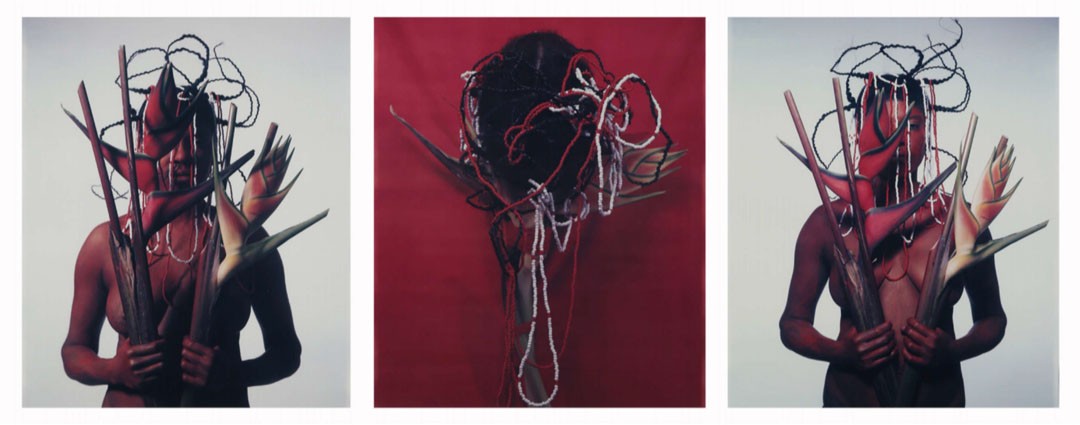Her work addresses issues of history, memory, gender, and religion; it investigates how each one of these themes informs identity formation.
Born in in 1959 in La Vega, a town in the province of Matanzas, Cuba, Campos-Pons is a descendant of Nigerians who had been brought to the island and enslaved in the 19th century. She grew up learning firsthand about the legacy of slavery along with the beliefs of Santería, a Yoruba-derived religion. Directly informed by the traditions, rituals, and practices of her ancestors, her work is deeply autobiographical. Often using herself and her Afro-Cuban relatives as subjects, she creates historical narratives that illuminate the spirit of people and places, past and present, thereby rendering universal relevance from personal history. Recalling dark narratives of the Trans-Atlantic slave trade, her imagery and performances honor the labor of black bodies on indigo and sugar plantations, renew Catholic and Santería religious practices, and celebrate revolutionary uprisings in the Americas. As she writes, “I…collect and tell stories of forgotten people in order to foster a dialogue to better understand and propose a poetic, compassionate reading of our time.”
Campos-Pons has from the beginning of her career created multi-media installations, drawings, paintings and performances. In the 1990s she began making large format polaroid photography as a means to elaborate the relationships among photography, painting, performance and sculpture. In spite of the diversity of her practice, the sea as a repository of memory and site of identity formation has remained a major facet of her work, allowing her to address issues that range from the Middle Passage to contemporary migrant crises.
Campos-Pons’ performance works tend to unfold as processionals, ritualistic spectacles that physically and spiritually embody the spaces in which they take place while asserting themselves outward and beyond the boundaries of those spaces.
Campos-Pons has had solo exhibitions at the Museum of Modern Art in New York, the Indianapolis Museum of Art, and the National Gallery of Canada, among other distinguished institutions. She has presented over thirty solo performances commissioned by institutions that include the Guggenheim Museum and the Smithsonian’s National Portrait Gallery (both in collaboration with sound artist and composer Neil Leonard. She has participated in the Dakar Biennale, the Johannesburg Biennial, the Guangzhou Triennial, the Pacific Standard Time: LA/LA and Prospect.4 Triennial, and (in also collaboration Leonard) the Venice Biennale, Documenta 14, and the Havana Biennial. Her works are held in more than thirty museum collections, including the Whitney Museum of American Art, New York; the Art Institute of Chicago; the Victoria and Albert Museum, London; the Museum of Modern Art, New York; the Museum of Fine Arts, Boston; the Perez Art Museum, Miami; and the Fogg Art Museum, Harvard University.
In 1980, Campos-Pons graduated from the National School of Art, La Havana, Cuba. She went on to study painting at La Havana’s Higher Institute of Art and then gained an MFA in Media Arts from the Massachusetts College of Art in Boston in 1988. In the late 1980s, Campos-Pons taught at the prestigious Instituto Superior de Arte in Havana and gained an international reputation as an exponent of the New Cuban Art movement that arose in opposition to Communist repression on the island. In 1991, she immigrated to Boston and taught at the School of the Museum of Fine Arts at Tufts University, where she received numerous prizes and honors for both her teaching and her artistic practice. In 2017, she was awarded the Vanderbilt Chair at Vanderbilt University and moved to Nashville, TN, where she currently resides.
Campos-Pons has founded or co-founded several non-profit arts organizations including the Intermittent Rivers, a Biennial Project in Matanzas, Cuba; the Engine for Art Democracy and Justice at Vanderbilt with Vanderbilt and Frist University; and When We Gather, a multi-faceted art project celebrating the elemental role women have played in the United States.








